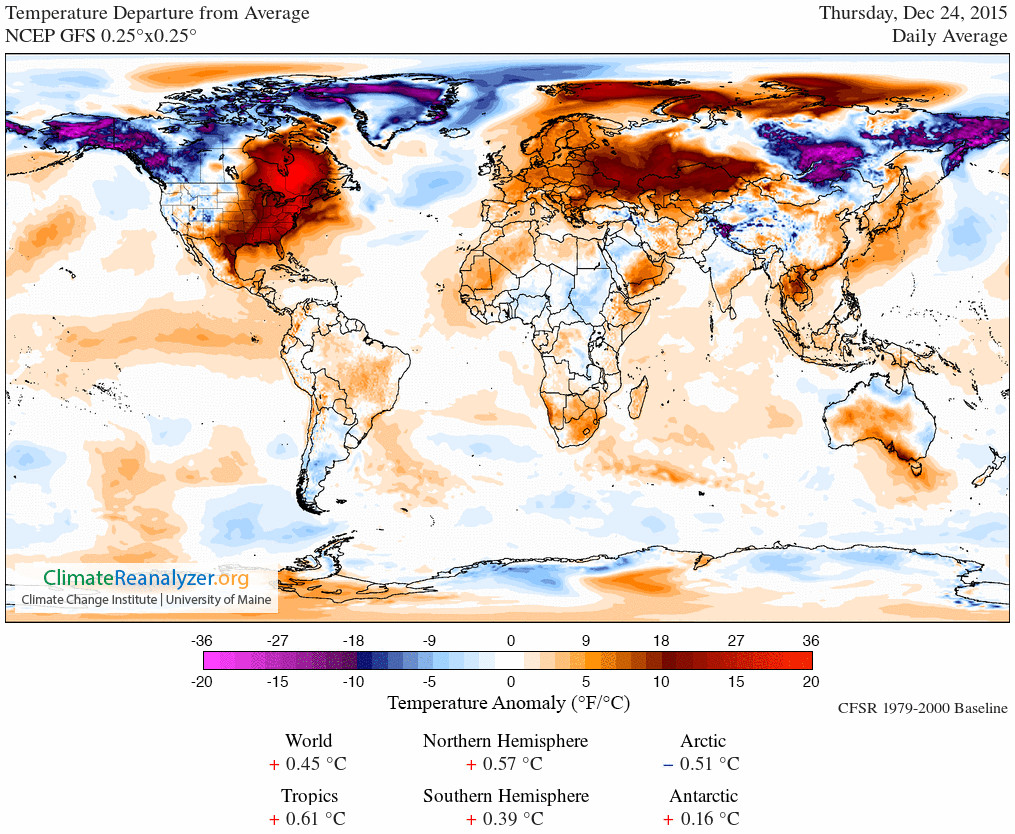Temperature anomalies
The northern hemisphere is warmer than usual this Christmas, as you may have heard. To be precise, it’s about 1 Fahrenheit degree above the 1979-2000 average after seasonal adjustment. (via)
Parts of the northern hemisphere are a lot warmer than that, including many parts that have a concentration of news media with a seasonal shortage of stuff to report. It’s hot in the eastern US, and this quite reasonably gets more reporting that it being cold in Siberia.

When the US northeast has unusually cold or snowy periods in winter, you see lots of people carefully explaining how this is weather or short-term variation and doesn’t tell you much about long-term climate patterns.
I’m one of those people, so this year I’m making the same point about warm weather. The northern hemisphere as a whole is warm by about what the well-known trend suggests. The strong El Niño causing weird local weather in the eastern US could definitely be due in part to the global trend, but conclusions about regional variation are much less reliable than conclusions about this CO2 stuff being a bit of a worry.
Like the snow last year, the hot Christmas this year is consistent with climate change predictions but doesn’t add importantly to the evidence. It’s dramatic that Baltimore is as warm as Auckland this Christmas, but compared to the mass of accumulated evidence on the subject, a few days freak weather in a small part of the world just doesn’t mean much.
Thomas Lumley (@tslumley) is Professor of Biostatistics at the University of Auckland. His research interests include semiparametric models, survey sampling, statistical computing, foundations of statistics, and whatever methodological problems his medical collaborators come up with. He also blogs at Biased and Inefficient See all posts by Thomas Lumley »